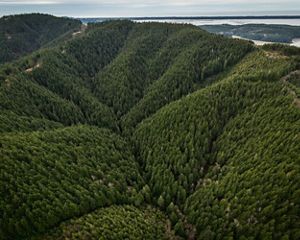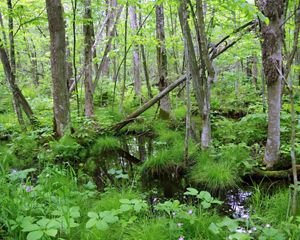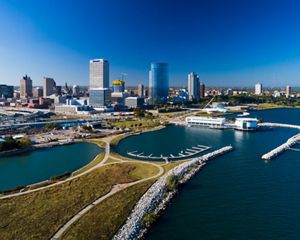How Wetlands, Grasslands and Other Natural Gems are Solving Wisconsin's Biggest Challenges
By Lisa Gaumnitz, freelance writer, Madison, WI
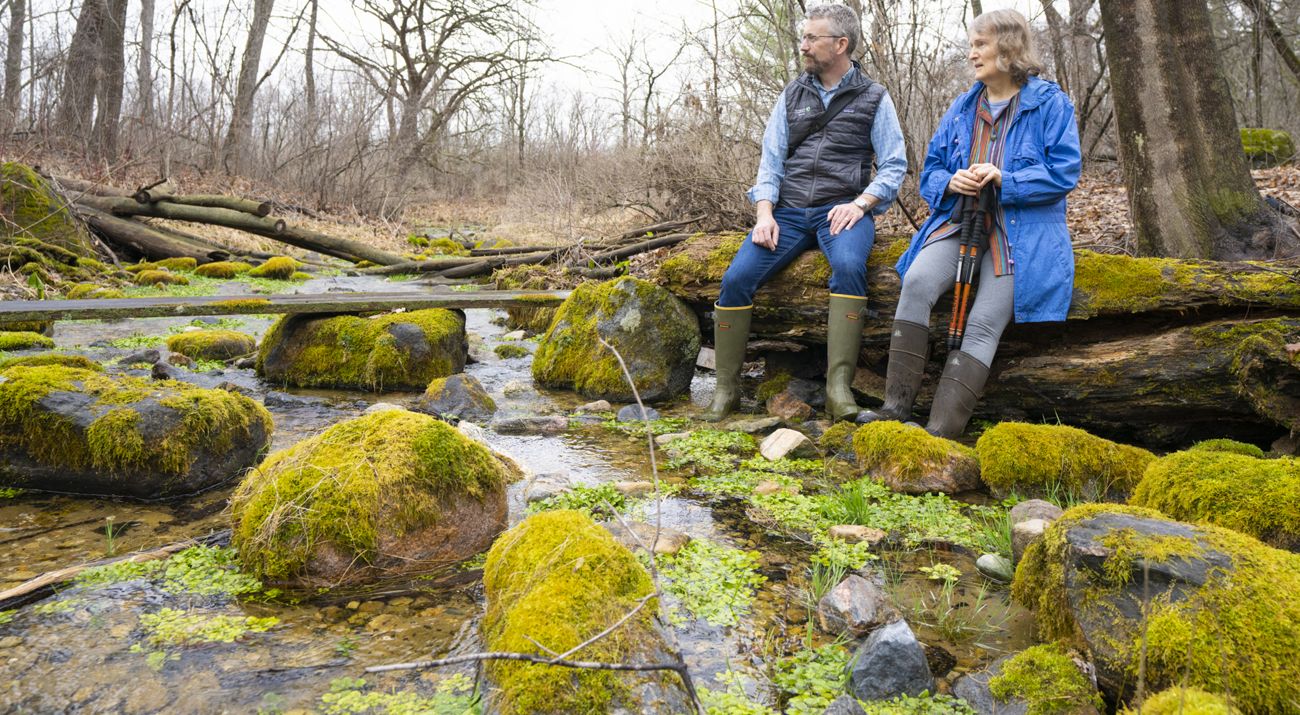
On a bluebird day in March, Waubesa Wetlands are hard at work.
Clad in knee-high rubber boots, Nature Conservancy Science and Strategy Director Nick Miller and board member and wetland expert Joy Zedler catalogue its visible and hidden labors.
Dormant clumps of tussock sedge trap melting snow, slowing and cleaning the water before it reaches Lake Waubesa. Four Canada geese fly by, wings beating in unison and honking calls in syncopation, before landing in habitat already hosting red-winged blackbirds and sandhill cranes.
Get more Wisconsin nature stories in your inbox!
Sign up for our monthly Nature News email.
Zedler lifts the edge of a mossy patch with her walking stick to reveal glistening black soil packed with the wetland’s “workhorses.” Microbes punch the clock 24/7, breaking down contaminants and converting excess nitrates that can threaten drinking water into air.
“Wetlands are diamonds,” says Zedler, retired from the University of Wisconsin-Madison after a career quantifying and communicating wetlands’ worth. “They’re tiny compared to other ecosystems globally, but they are extremely valuable.”
Increasingly, these “diamonds” and other natural landscapes are helping solve some of our most pressing human challenges: keeping our water clean, reducing flood damage and improving our families’ health. They’re also tackling climate change—helping nature adapt, helping people adapt and helping solve climate change by storing carbon: Research by TNC and partners shows that natural climate solutions can deliver up to one-third of the emission reductions needed by 2030 to avoid a worst-case scenario.
Nature-based solutions are also known as ecosystem services and green infrastructure. Protecting remaining forests, wetlands and grasslands; using farming practices that safeguard clean water and improve soil health; and replacing concrete-lined streambeds with naturalized channels and native landscaping are all examples of nature-based solutions here in Wisconsin.
To maximize benefits, TNC and partners are developing web-based mapping tools like Wetlands By Design to help show where nature-based solutions can deliver the biggest gains. TNC is also supporting other groups in achieving shared conservation goals and stressing bottom-line benefits, like flood control and soil health, in conversations with local officials and landowners.
“This expanded vision helps advance wildlife and habitat conservation and also recognizes that we need healthy habitats in order for our own families and economy to thrive,” Miller says. “Conserving nature is helping people.”
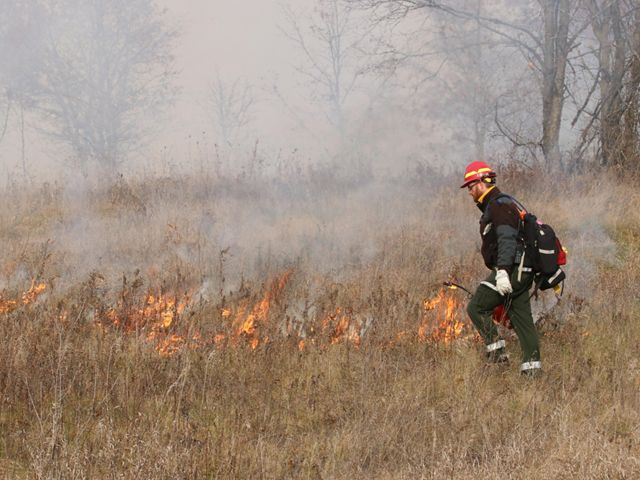
Glacial Gifts Help Species-rich Area Face and Fight Climate Change
On a bitterly cold Valentine’s Day, Brian Miner walks the trails at Newell and Ann Meyer Nature Preserve near Eagle. He warms to showing how work done here preserves one of Wisconsin’s most species-rich areas in a changing climate and captures more carbon to leave a brighter future for his two young children and their generation.
Receding glaciers 11,000 years ago created kettle lakes, steep ridges, groundwater and springs. That diverse topography, geology and hydrology gave rise to an amazing array of ecosystems and species: oak savanna, woodlands, wetlands, prairie and springs forming the headwaters of the Mukwonago River, southeastern Wisconsin’s cleanest stream and a treasure trove of freshwater mussels and fish.
Quote: Brian Miner
Having these diverse landforms will provide more opportunities, and the best opportunities, for diverse species to survive a changing climate.
Regular prescribed burns, invasive species control and the recent restoration of 200 acres of prairie on former ag fields boost reproduction of deep-rooted native plants that anchor soil and clean water soaking into the groundwater and river. A new web-based mapping tool underway will help safeguard groundwater quantity by showing where new wells to supply people will least impact nature.
Resilient & Connected Landscapes Story Map
See how the Resilient & Connected Landscapes mapping tool identifies sites near you.
Explore the Story MapTNC’s Resilient and Connected Network mapping tool helps Miner prioritize restoration and management of lands more resilient to climate change because of their microclimates with lower temperatures and more moisture. North-facing slopes receiving less sun and land over shallow groundwater are examples.
“Having these diverse landforms will provide more opportunities, and the best opportunities, for diverse species to survive a changing climate,” Miner says.
He is exploring with the Northern Institute of Applied Climate Science ways to tweak management to bank more carbon—fostering native species like oak trees, for one, and shaping prescribed burns and restoration timber harvests to ultimately produce more favorable carbon trade-offs.
It all adds up, here and globally. “I’m cautiously optimistic,” Miner says. “There is a window to act.”
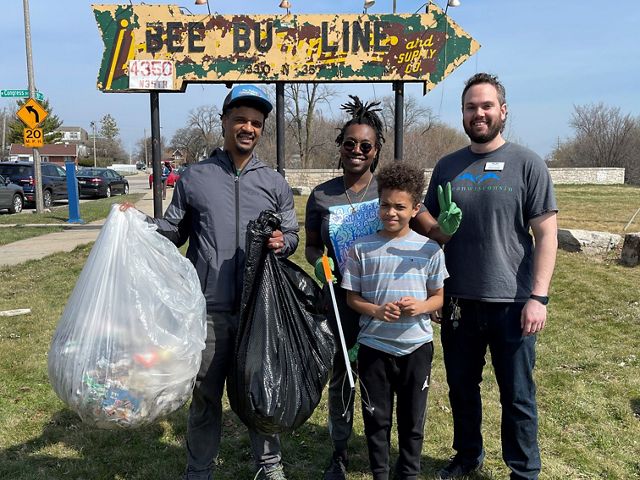
Growing Healthier Neighborhoods with Green Space
Prairie plants from the Newell and Ann Meyer Nature Preserve are helping grow a community-based effort to re-engage African Americans in Milwaukee with nature and, in so doing, improve their health, well-being and empowerment.
Nearby Nature Milwaukee, an environmental justice and equity initiative, recently visited the preserve to collect seeds for planting this spring on a three-acre natural area along Lincoln Creek. Nearby Nature Milwaukee now manages the land, part of the larger Lincoln Creek greenway created two decades ago when Milwaukee Metropolitan Sewerage District (MMSD) ripped out concrete and naturalized the creek bed to sustainably manage stormwater.
Quote: Lamont Smith
It really is about sharing knowledge and building people’s ability to participate in conservation efforts.
The site, known as Hopkins Hollows along Lincoln Creek, is a remnant of a naturally occurring wetland that was filled in to accommodate the rapid industrialization of Milwaukee in the early 1900s. Today, the predominantly African American neighborhood bears the burden of the loss of industrial jobs; the legacy of social, economic and environmental injustices; and the climate change-driven threats of flooding and heat islands.
“We’re looking to activate the space as a nature/educational space where African Americans can come and have a hands-on experience with nature,” says Steven F. Hunter, program director for Nearby Nature Milwaukee. “Nature provides a lot of lessons: resilience, adaptation, diversity and the empowerment of knowing, ‘Oh, what I do actually matters.’”
Nearby Nature Milwaukee has engaged neighbors in building a trail on the property and planting hundreds of trees. This spring, they’ll begin restoring a half-acre prairie using seeds from the Meyer Preserve. Already, fourth- and fifth-grade students from nearby schools led by the organization’s nature educator explore and learn there. Winter hikes, kayaking, birding and other public outings bring adults out to the site.
“It really is about sharing knowledge and building people’s ability to participate in conservation efforts,” says TNC’s Milwaukee Program Manager Lamont Smith. Working in genuine partnership with community-based organizations provides a cornerstone for The Nature Conservancy's urban conservation program.
“Cities are built on top of nature, but that doesn’t mean that the ecology and topography went away,” Smith says. “We can do more to reconnect people to them.”

Building Flood Resiliency and Community Collaboration
In the Green Bay area, natural solutions are helping reduce flooding and improve water quality in the East River Watershed, where flooding in recent years has forced evacuations, caused millions in damage and rendered dozens of homes uninhabitable.
“People in the community are really ready to not experience this type of flooding and want to see more green infrastructure,” says Kayla Wandsnider, East River Collaborative Coordinator and a TNC Fellow. “They also want to be able to use the river recreationally.”
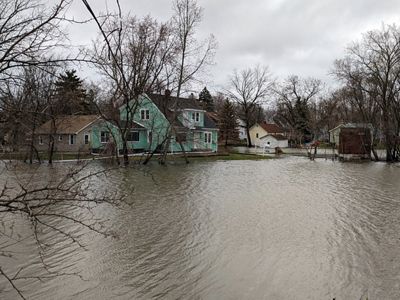
To reach these goals, urban and rural residents and officials from seven of the 13 municipalities intersecting the watershed are working with TNC, Wisconsin Sea Grant, NEW Water and the University of Wisconsin-Madison. The name, East River Collaborative, reflects the focus on increasing communication, partnership and resource sharing.
So far, Green Bay, Allouez and Ledgeview are using project funds to replace turf grass on some public lands with native pollinator plants good at anchoring soil and soaking up rain and melting snow, while some agricultural areas are creating natural retention and treatment ponds to retain farm runoff.
Seeding Sustainable Farming to Yield Clean Water and Thriving Farms
Planting cover crops and plowing less are among the soil- and water-protective measures Deer Run Dairy LLC has adopted on its 2,500 acres of cropland in Kewaunee County. Now co-owner Duane Ducat is recruiting other farmers to do the same.
Cover crops—like rye grass, clovers and radishes—are planted in harvested fields that would otherwise be bare during winter. “Reduced till” or “no till” methods decrease or eliminate turning over the soil on croplands. Both have a primary purpose of improving soil health.


“It’s hard to change the culture of farms because that’s the way we grew up: Till soil and plant into nice brown dirt,” Ducat says. “We’re trying to do the right thing, and it’s happening.”
He was one of 14 farmers who founded Peninsula Pride Farms (PPF) in 2016 in Kewaunee and southern Door counties to address local concerns about manure contamination in drinking water wells. Today, PPF’s almost 60 members share information, hold demonstrations and recruit farmers to try new practices to protect water quality.
Many partners support the group, including Farmers for Sustainable Food and TNC, which directly provides this and eight other farmer-led groups with technical help and financial assistance. In 2020 and in 2021, PPF used a TNC gift to share the cost with farmers of trying cover crops or increasing the diversity of their cover crop seed mix. Such help boosted cover crop acres 600% to 28,805 and no-till acres to 32,429, a 700% increase, in Door and Kewaunee counties.
Quote: Scott Jeanquart
I have four sons and I would like to pass this on to them, or at least show them that water quality is a huge important thing for future generations.
“There are producers out there doing great work when it comes to farming sustainably,” says TNC Agricultural Strategy Manager Ricardo Costa. “TNC wants to highlight and support them.”
The cost-share spurred Scott Jeanquart to plant 50 acres of cover crops on the Door County dairy farm he operates with his parents, wife and young sons. “We tripled the acreage of cover crops planted for this year.”
They saved fuel, tractor wear and tear; fed their cows and sold the rest of the cover crop; and improved soil health and reduced runoff in a county reliant on Lake Michigan for its $480 million tourism economy.
“Being in a delicate county with low soil depth and a lot of water around us, we need to hold onto our soil,” Jeanquart says. “I have four sons and I would like to pass this on to them, or at least show them that water quality is a huge important thing for future generations.”
About the Author
Lisa Gaumnitz is a freelance nature and natural resource policy writer based in Madison, Wis.
Stay in the Loop
Sign up to receive updates about our conservation work in Wisconsin and beyond. See a sample.
